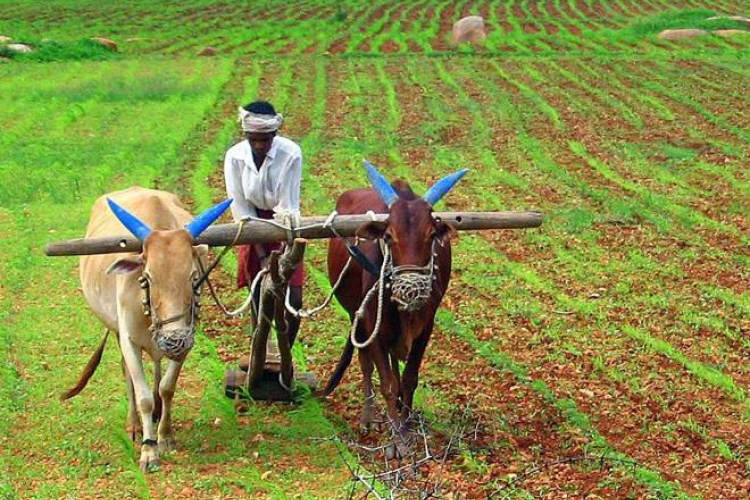FARM LOAN WAIVER
What is farm loan waiver
Farm loans may be crop loans or investment loans taken to buy equipment. Both farmers and banks reap a good harvest when all is well. But when there is a poor monsoon or natural calamity, farmers may be unable to repay loans. The rural distress in such situations often prompts States or the Centre to offer relief — reduction or complete waiver of loans.
Essentially, the Centre or States take over the liability of farmers and repay the banks. Waivers are usually selective — only certain loan types, categories of farmers or loan sources may qualify.
Why is it important?
Agriculture in India has been facing many issues — fragmented land holding, depleting water table levels, deteriorating soil quality, rising input costs, low productivity. Add to this vagaries of the monsoon. Output prices may not be remunerative. Farmers are often forced to borrow to manage expenses. Also, many small farmers not eligible for bank credit borrow at exorbitant interest rates from private sources.
When nature rides roughshod over debt-ridden farmers in the form of erratic monsoon and crop failures, they face grim options. Indebtedness is a key reason for the many farmer suicides in the country.
How it had impacted earlier
Studies done by the Kolkata based Indian Statistical Institute and the World Bank have showed that loan waiver is not a solution to Indian agriculture mess. The institute’s 2013 study showed increase in loan repayment default after the Central government announced farm loan waiver of Rs 60,000 crore in 2008, a year before general election. Honest farmers repaying the loan also turned defaulters after the waiver.
A study — The Economic Effects Of A Borrower Bailout: Evidence From An Emerging Market — by Xavier Giné and Martin Kanz of the World Bank said such move can affect agriculture output in medium to long term as banks may get more selective in extending credit.
A 2015 ICRIER paper said the massive write-off of loans in 2008 took its toll on the banks, increasing the non-performing assets of commercial banks threefold between 2009-10 and 2012-13.
Arundhati Bhattacharya, State Bank of India chairperson, said recently that the farm loan waiver leads to credit indiscipline for which a privilege motion was moved against her in the Maharashtra assembly.Long term effect of loan waiver
Limitations of farm loan waiver
Firstly, it covers only a tiny fraction of farmers. The loan waiver as a concept excludes most of the farm households in dire need of relief and includes some who do not deserve such relief on economic grounds.
Second, it provides only a partial relief to the indebted farmers as about half of the institutional borrowing of a cultivator is for non-farm purposes.
Third, in many cases, one household has multiple loans either from different sources or in the name of different family members, which entitles it to multiple loan waiving.
Fourth, loan waiving excludes agricultural labourers who are even weaker than cultivators in bearing the consequences of economic distress.
Fifth, it severely erodes the credit culture, with dire long-run consequences to the banking business.
Sixth, the scheme is prone to serious exclusion and inclusion errors, as evidenced by the Comptroller and Auditor General’s (CAG) findings in the Agricultural Debt Waiver and Debt Relief Scheme, 2008.
Lastly, schemes have serious implications for other developmental expenditure, having a much larger multiplier effect on the economy.
Alternatives to tackle crisis
Proper identification: For providing immediate relief to the needy farmers, a more inclusive alternative approach is to identify the vulnerable farmers based on certain criteria and give an equal amount as financial relief to the vulnerable and distressed families
Enhance non- farm income: The sustainable solution to indebtedness and agrarian distress is to raise income from agricultural activities and enhance access to non-farm sources of income. The low scale of farms necessitates that some cultivators move from agriculture to non-farm jobs.
Improved technology, expansion of irrigation coverage, and crop diversification towards high-value crops are appropriate measures for raising productivity and farmers’ income. All these require more public funding and support.
Way ahead:
The magic wand of a waiver can offer temporary relief, but long-term solutions are needed to solve farmer woes. There are many dimensions of the present agrarian crisis in India. The search for a solution therefore needs to be comprehensive by taking into consideration all the factors that contribute to the crisis. Furthermore, both short- and long-term measures are required to address the numerous problems associated with the agrarian crisis.


 "UPSC-2026-PRELIMS COMBINED MAINS FOUNDATION PROGRAMME" STARTS WITH ORIENTATION ON FEB-10
"UPSC-2026-PRELIMS COMBINED MAINS FOUNDATION PROGRAMME" STARTS WITH ORIENTATION ON FEB-10